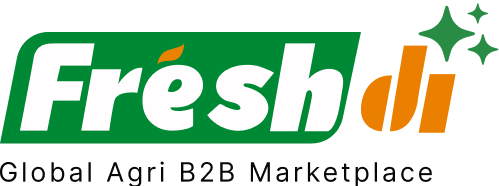Introduction – China’s Soybean Market in Statistical Focus
When you think of soybeans, you probably picture massive fields in Brazil or the U.S. But here’s a twist—China, while not the top producer, plays an enormous role in the global soybean market. In fact, it’s the world’s largest importer of soybeans, accounting for over 60% of global trade.
With a population of over 1.4 billion and a booming livestock industry, China consumes more soybeans than it can grow. This makes it a critical hub for soybean trade, not just regionally but globally. For businesses in the agri-food or ingredients sector, understanding China’s market trends and identifying top-performing suppliers is no longer optional—it’s essential.
And with platforms like Freshdi, which provides verified supplier data, RFQ trends, and export insights, companies can now make smarter choices backed by real-time data.
Deep Dive – Key Production, Export Statistics & Current Demand Data
Let’s get into the nitty-gritty—what do the numbers say?
Domestic Production: Small But Growing
In the 2025-26 marketing year, China’s soybean production is forecasted at around 19.93 million metric tons. This is just a slight bump from the previous season, thanks to favorable weather and expanded planting in the north. Still, it covers only a fraction of China’s needs.
Heavy Reliance on Imports
To bridge the gap, China imported a whopping 105 million tons of soybeans in 2024. Here’s the supplier breakdown:
- Brazil: 71% (75 million tons)
- United States: 21% (22 million tons)
- Argentina: 3.9% (4.1 million tons)
And those numbers are only climbing, especially as China recently inked a deal to purchase 25 million metric tons annually from the U.S. starting late 2025. Talk about a power move.
Consumption & Market Value: Growing Steadily
China’s soybean consumption hit 125 million tons in 2024, mainly driven by the livestock industry’s need for protein-rich soybean meal. This figure is expected to rise to 140 million tons by 2035.
In money terms? We’re looking at a market that will hit $82.9 billion by 2035, growing at a CAGR of 2.6%. That’s not just growth—it’s a signal for opportunity.
Minimal Exports, Strategic Partnerships
China doesn’t export much soybean—just 66,000 tons in 2024. Key destinations include:
- South Korea: 34,000 tons
- Japan: 16,000 tons
- Vietnam: 6,100 tons
But there’s more to the story. Due to trade tensions with the U.S., China’s been diversifying, increasing purchases from Argentina and Uruguay—expected to hit 10 million tons in the 2025/26 season.
Freshdi Market Insights
Data from Freshdi reflects similar trends. RFQs for soybean meal, oil, and processing machinery have surged in Q2 2025, showing heightened interest from buyers in Europe, Southeast Asia, and the Middle East. Verified supplier ratings and transaction volumes also align closely with the import-export data.
Top 7 Verified Soybean Suppliers in China – Proven Export Performers
When you’re dealing with millions of dollars in trade, you don’t just want “any supplier”—you want the right supplier. Here are seven top-performing, Freshdi-verified suppliers that have made waves in August 2025:
1. Xiamen Kingfood Import And Export Co., Ltd.
- Known for: Frozen Edamame (IQF Soybean)
- Strengths: HACCP-certified, high export volume to Japan and Korea
- Why it stands out: Strong cold-chain logistics and consistent quality
2. Qingdao Bozewon International Trade Co., Ltd.
- Known for: Functional soy protein concentrates
- Strengths: Advanced extraction facilities, ISO and Halal certifications
- Ideal for: Food manufacturers and nutritional product companies
3. Deyang City Jinxing Agricultural Machinery Manufacturing Co., Ltd.
- Known for: Mini soybean harvesting machines
- Strengths: Exported to over 20 countries, CE certification
- Use case: Ideal for small to medium-scale farms
4. Xiangyang Sanzhen Ecological Agriculture Co., Ltd.
- Known for: Refined soybean cooking oil
- Strengths: Eco-friendly farming, traceable supply chain
- Buyer profile: Retailers and food service distributors
5. Xi’an HerbSpirit Technology Co., Ltd.
- Known for: Soy lecithin and phosphatidylserine powder
- Strengths: High-tech extraction, clean-label ingredients
- Great for: Nutraceutical and cosmetic brands
6. Zhengzhou Bridge Biochem Co., Ltd.
- Known for: Brazilian-origin soybean meal
- Strengths: Direct sourcing, competitive pricing
- Popular in: Animal feed and poultry sectors
7. Zhengzhou Sinoder Indutech Machinery Co., Ltd.
- Known for: Soybean grain processing machines
- Strengths: Turnkey solutions, after-sales support
- Suitable for: Medium to large-scale processors
Dynamic Ranking Note:
Keep in mind that supplier performance can change. Platforms like Freshdi offer dynamic rankings—like “Top Suppliers of the Month/Quarter”—based on real-time data including RFQ responses, buyer feedback, and shipping timelines.
Market Navigation – Statistical Trends, Price Insights & Export Dynamics
Navigating the market without data is like sailing without a compass. So, what do the latest trends tell us?
Soybean Variants in Demand
There’s a clear spike in demand for:
- Soybean meal: Especially from feed manufacturers
- Refined soybean oil: For household and commercial cooking
- Soy protein isolates: Gaining traction in the vegan and health food markets
Freshdi’s RFQ data for Q2 and Q3 2025 shows a 17% increase in inquiries for soy protein products, particularly from Europe and the Middle East.
Seasonal Price Shifts
Prices tend to rise around Q1 (due to Chinese New Year and reduced logistics) and Q3 (harvest season disruptions). Smart buyers use historical pricing data to secure long-term contracts before peak seasons.
Export Strategy Tip
Exporting soybeans from China might seem counterintuitive given its high import volumes, but niche categories—like soy extracts, oil, or machinery—offer solid export opportunities.
Conclusion – Leveraging Data for Informed Procurement
So, what’s the takeaway?
- China is a soybean giant—not in production, but in consumption and import.
- Import volumes are rising, and diversification is in full swing.
- Choosing the right supplier depends on real data: certifications, past performance, and market presence.
- Freshdi bridges the gap, offering verified suppliers, RFQ trends, and trade insights that save you time and money.
In a market that’s evolving fast, your procurement strategy shouldn’t rely on guesswork. Use platforms like Freshdi to turn data into decisions, and decisions into growth.
Key Takeaways
- China consumes over 125 million tons of soybeans annually.
- Imports dominate the supply chain, led by Brazil and the United States.
- Verified suppliers on Freshdi offer value-added soybean products and advanced machinery.
- Market demand is shifting toward protein isolates, soybean oil, and processing solutions.
- Smart buying involves understanding seasonal trends and supplier performance data.
Soybean Buyer’s Checklist
✅ Have you verified supplier certifications on Freshdi?
✅ Are you aware of seasonal price shifts?
✅ Do you understand the demand for specific soybean variants?
✅ Have you researched supplier export history?
✅ Are you using RFQ trends to anticipate future needs?
Future Outlook: What’s Next for China’s Soybean Market?
China’s focus is shifting from quantity to quality. Expect more investment in domestic production, tech-driven farming, and import diversification. As trade tensions evolve, so will sourcing strategies.
For global buyers, this means new opportunities—but only if you stay ahead of the curve. Use Freshdi’s insights to monitor trends, find verified partners, and stay competitive.
FAQs
1. Why does China import so many soybeans?
Because domestic production can’t meet demand—especially for livestock feed and cooking oil. Imports bridge this massive gap.
2. What’s the best time to buy soybeans from China?
Typically during post-harvest months (Q4), when prices stabilize and supply is steady. But always check historical data on Freshdi to time your purchase.
3. Are Chinese soybean products suitable for export?
Absolutely. While China imports raw soybeans, it exports refined products like oil, protein isolates, and processing equipment.
4. How can I verify a Chinese soybean supplier?
Platforms like Freshdi offer supplier verification, buyer reviews, and export history—making your job easier and safer.
5. What types of soybean products are in high demand now?
Soy protein isolates, refined cooking oil, and animal feed products like soybean meal are trending globally, especially in health-conscious and livestock-heavy markets.
References
- World Grain – China’s Soybean Production Ticks Up
- IndexBox – China Soybean Market Overview 2024
- AP News – China to Purchase 25M Tons of U.S. Soybeans
- Reuters – China Boosts Soybean Buys from Argentina, Uruguay
- Reuters – China Increases Agriculture Budget
- Freshdi – B2B Marketplace for Global Agri Buyers


